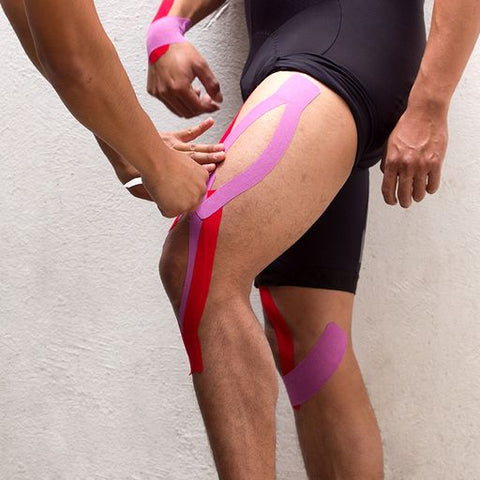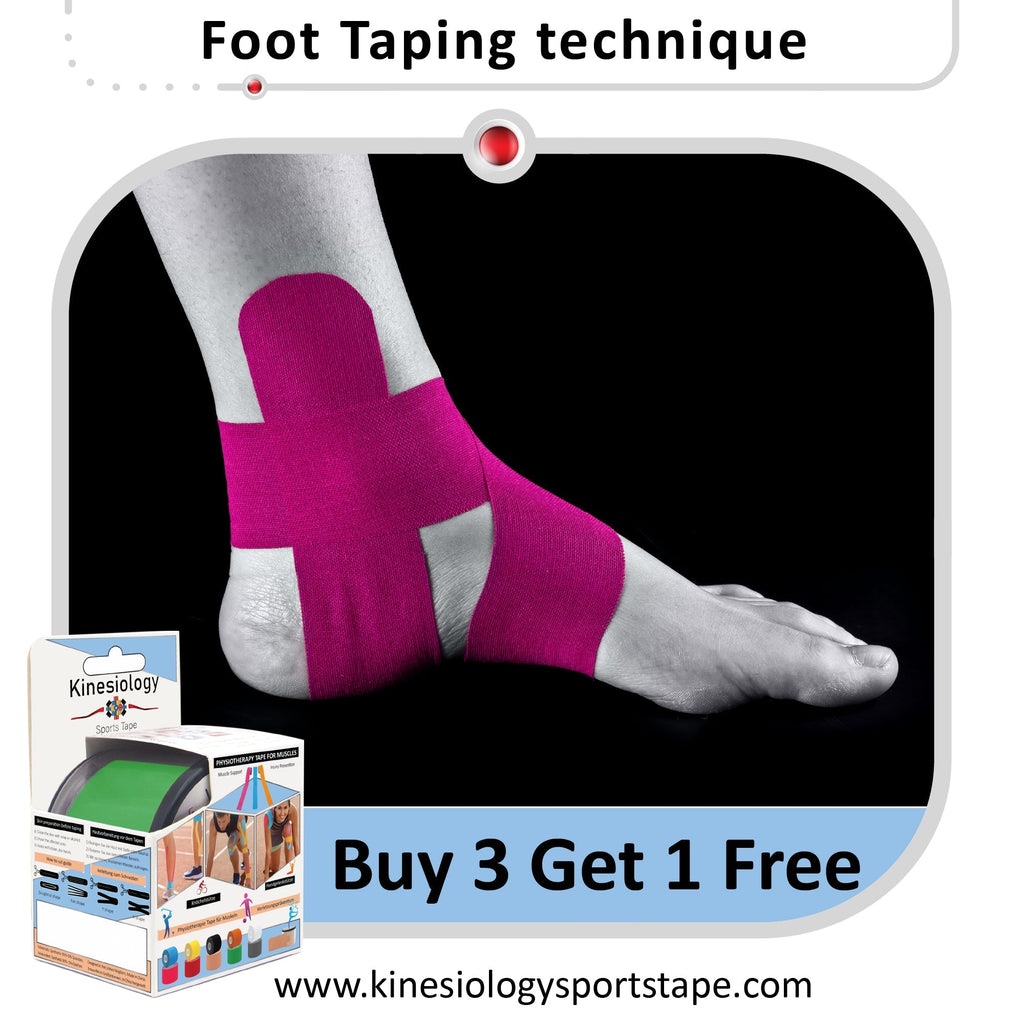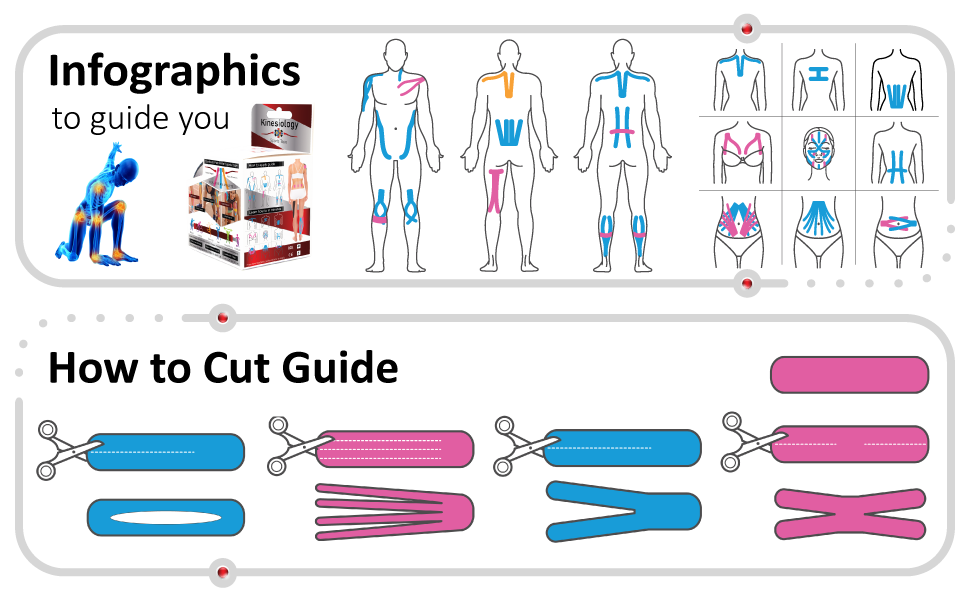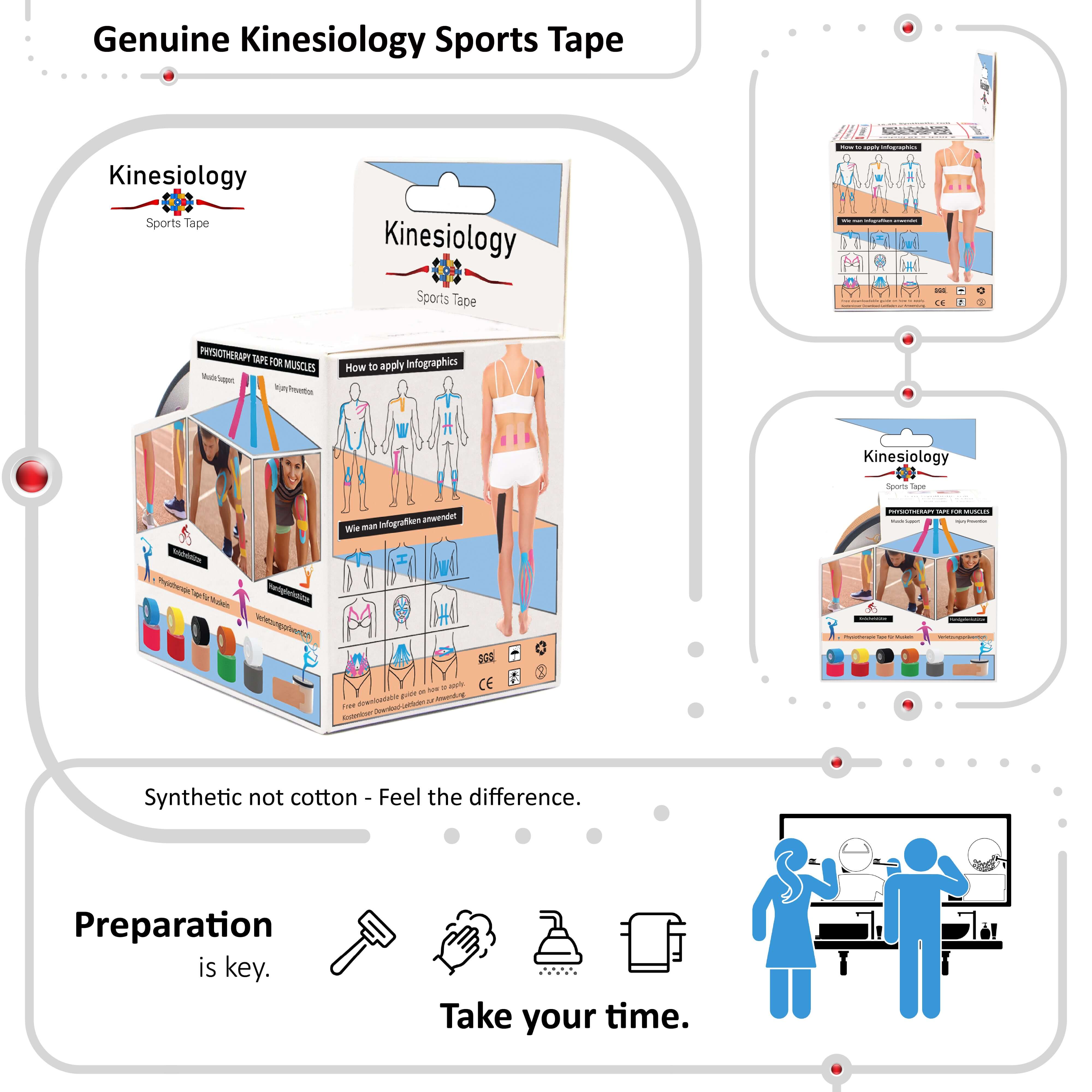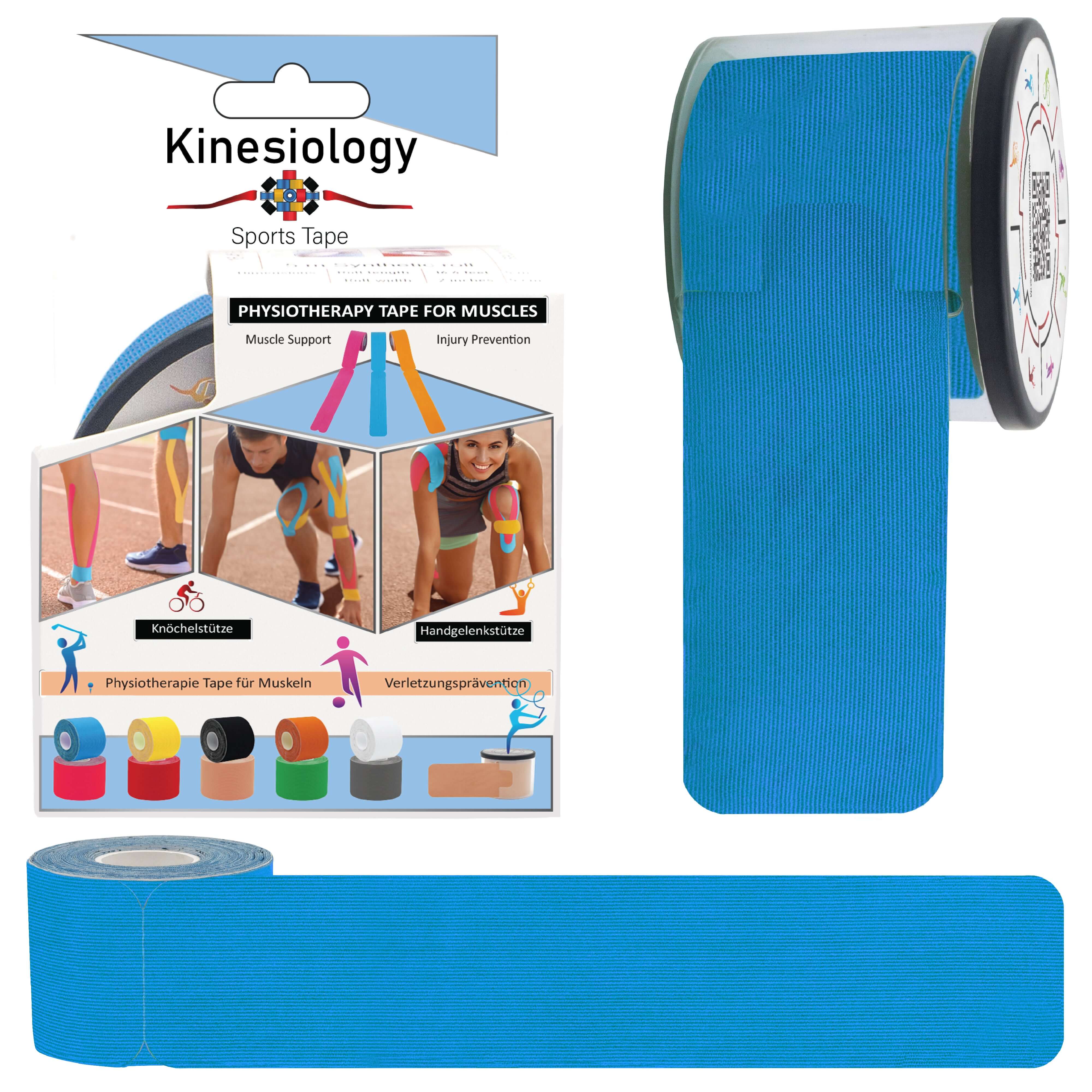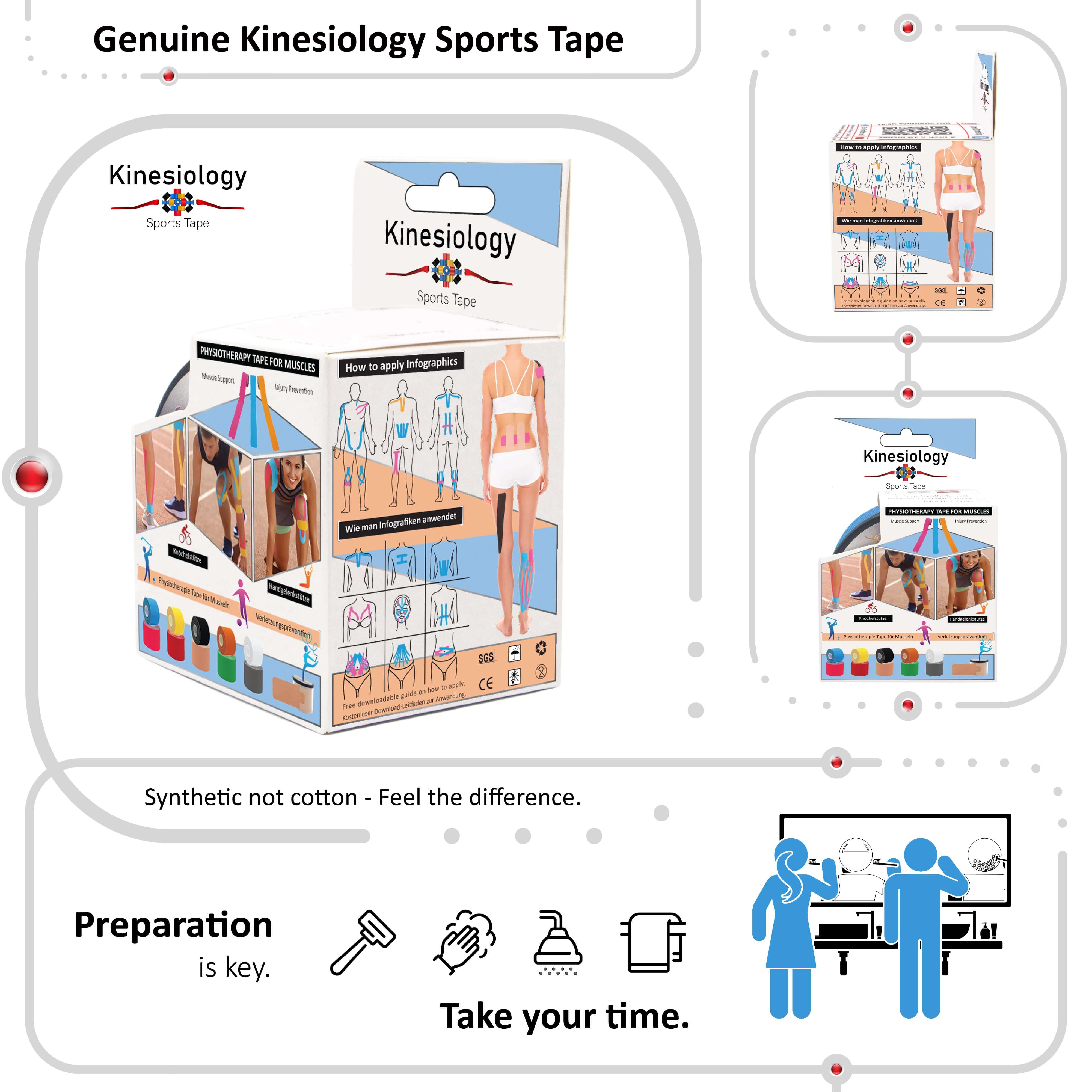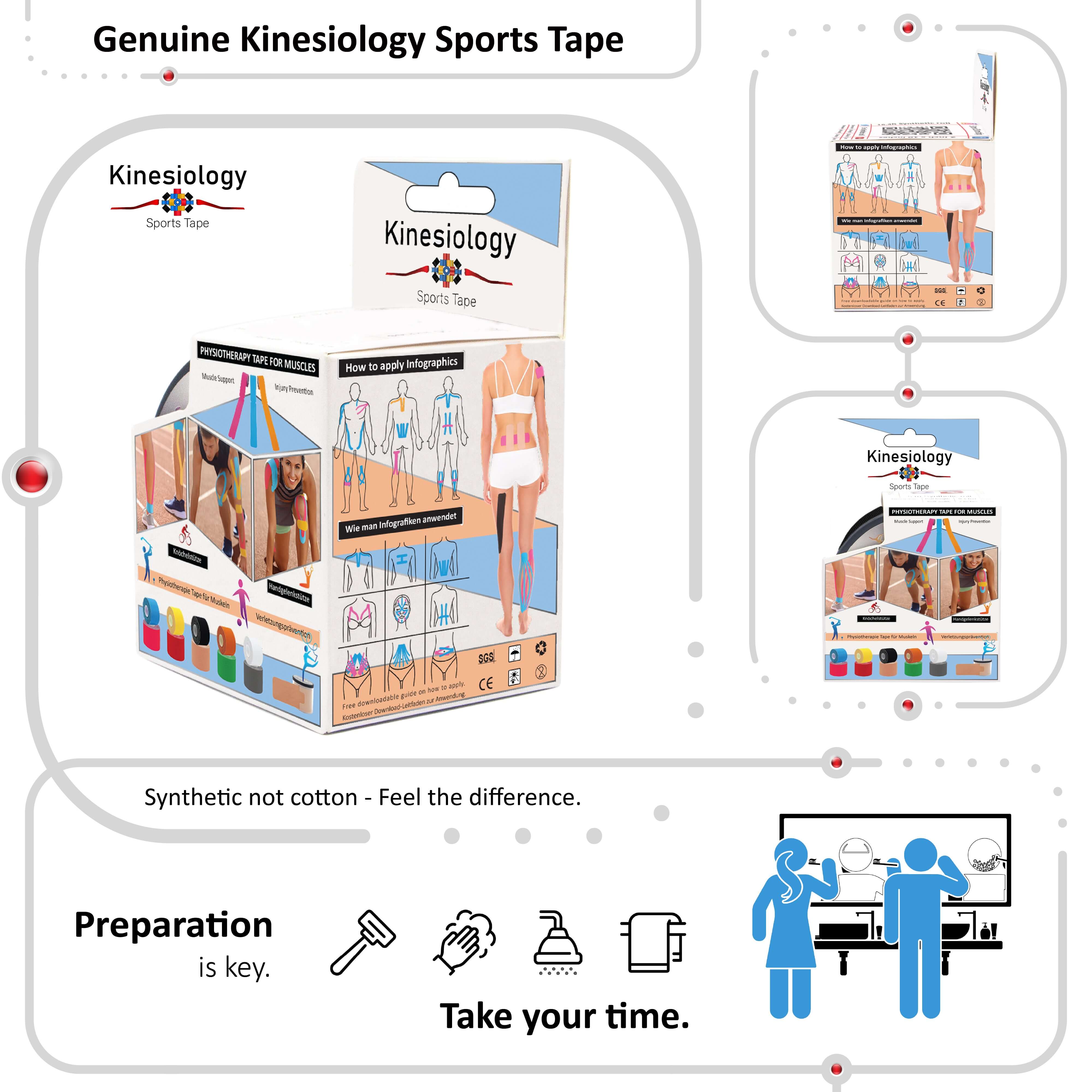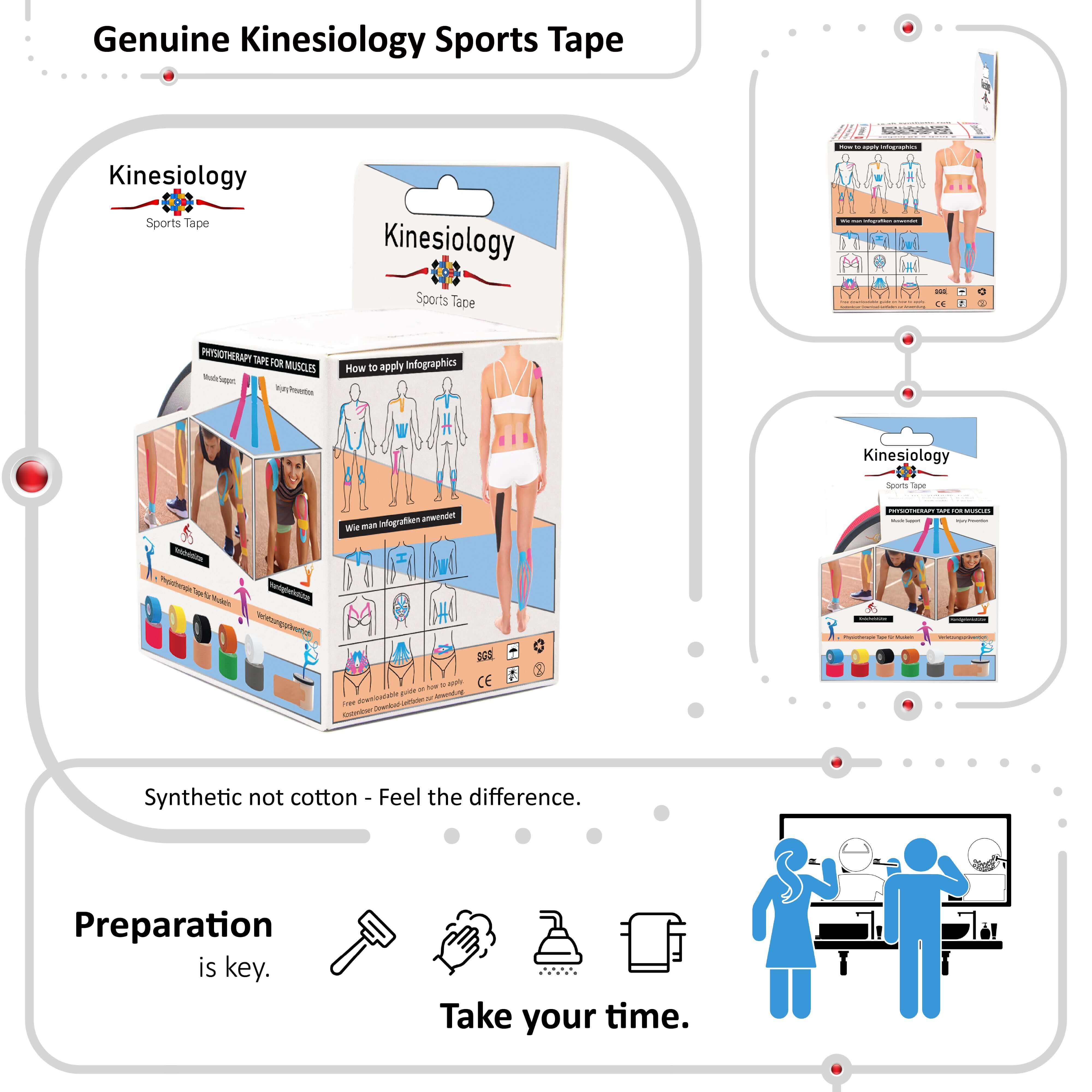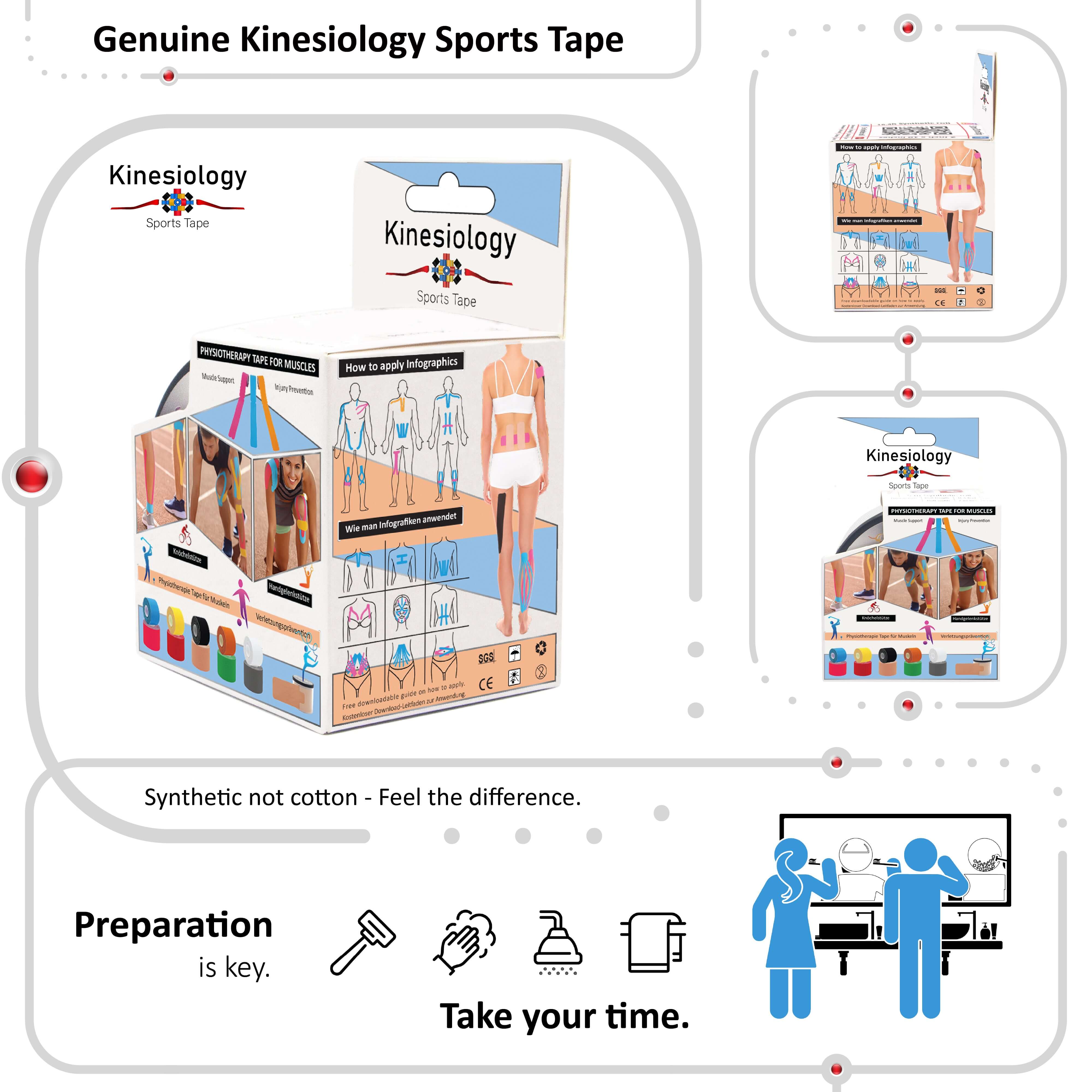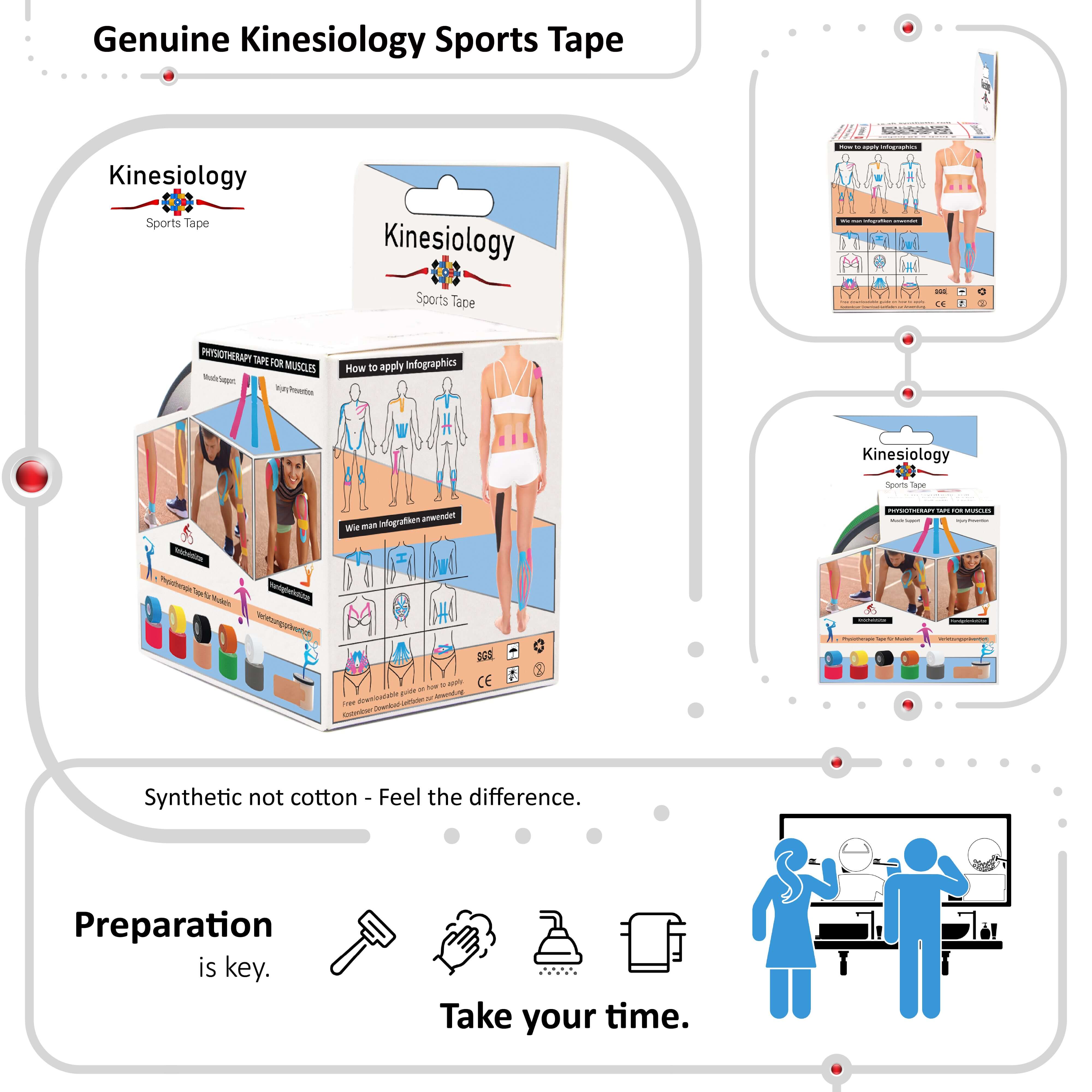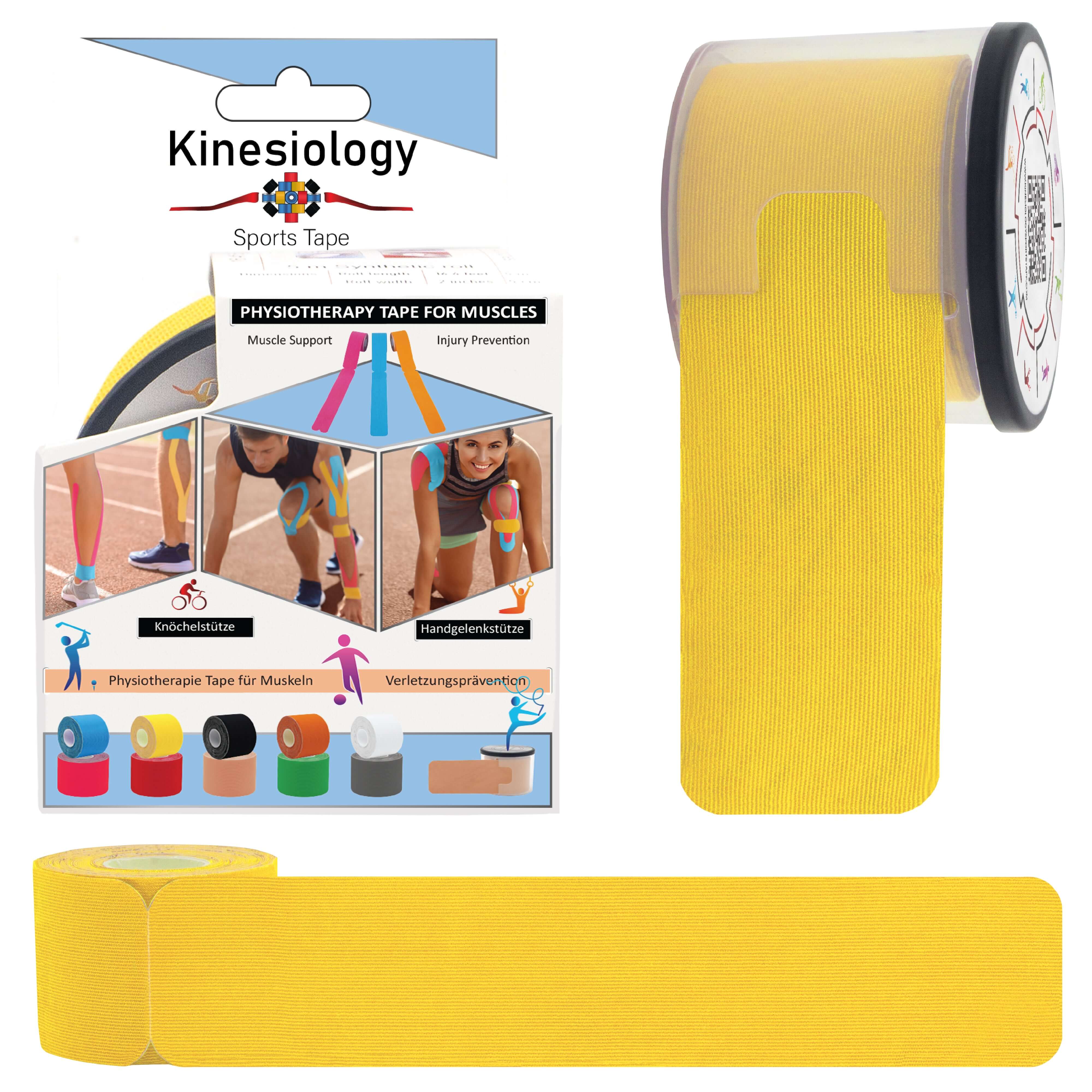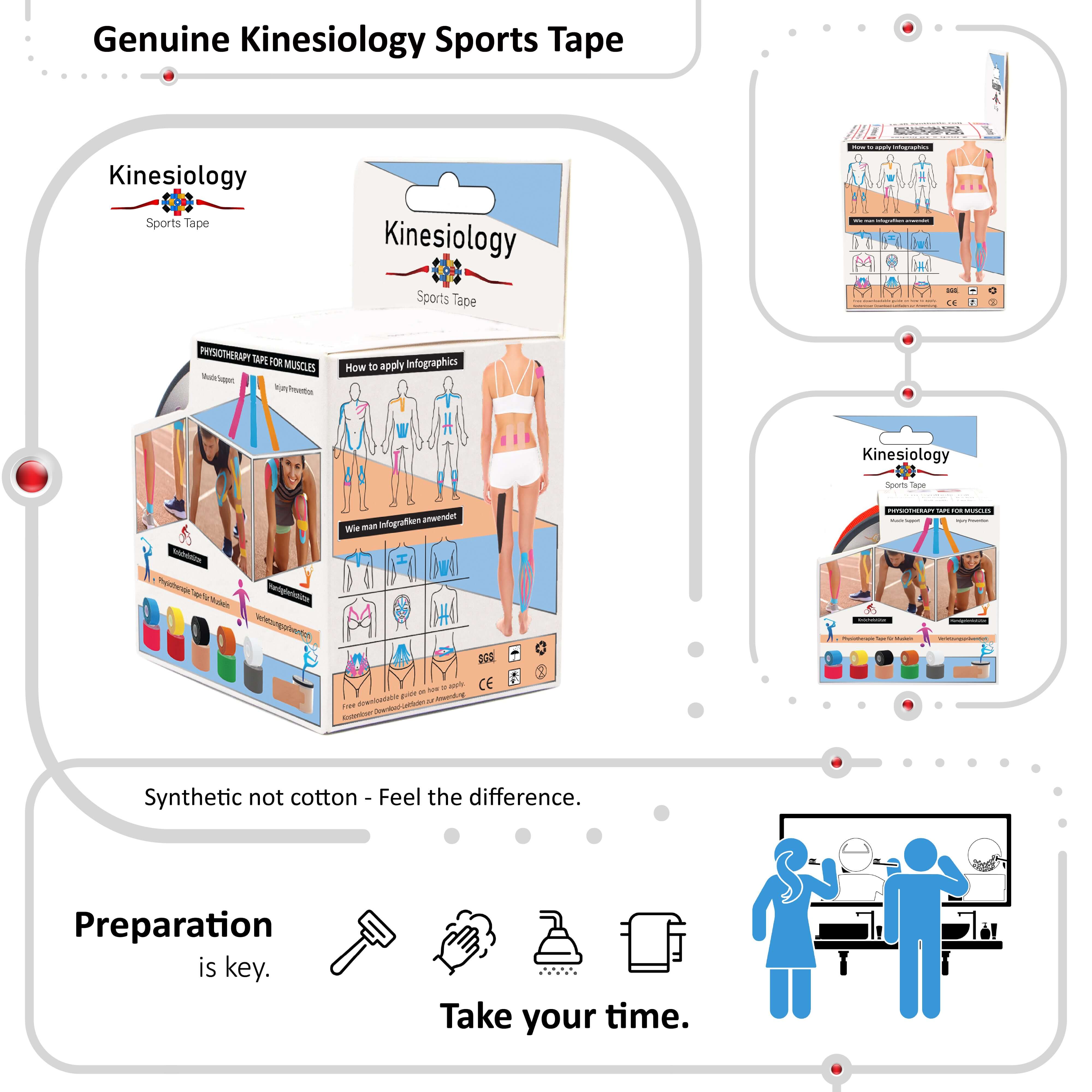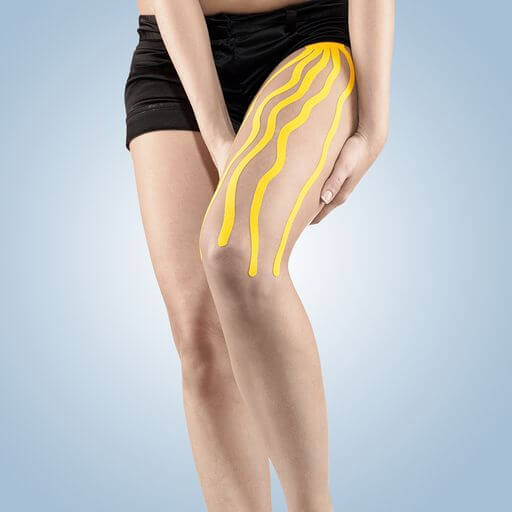
Iliotibial Band Syndrome

A painful condition that very often affects cyclists and competitive runners, iliotibial band syndrome is a frustrating injury that causes severe pain in the outer knee. It can cause a lot of distress because it takes quite a long time to heal and can put people out of training for longer than they would hope. Of course any sports person or even home enthusiast can be affected by the condition but it is thought to be over use which gradually sets in and causes this non-traumatic pain as the foot strikes the floor or the repetitive motion of the pedal being pushed when cycling. Kinesiology taping is another great way to support this condition and help the patient get back up and running quicker than you would normally expect with conservative traditional health methods.
ITB Anatomy
If we head to the anatomy classroom we will discover that the ITB is part of the gluteus maximus and tensor fascia lata muscles that run in the hip joint. Where these two larger muscles meet they form the letter Y and this is the start of the ITB. It starts just under your pelvis and then runs along the outer side of the thigh and attaches just below your knee in the joint. It is called the iliotibial band because it attaches to the tibia which is your shin bone and the point of attachment is called Gerdys Tubercle. It is responsible for ensuring that the thigh and knee joint remain stable. So when inflamed it can be very painful and make walking very difficult.
Creating Other Issues
Of course the natural reaction of most patients is to try and push through but because the weight-bearing is difficult on the injury side the whole gait changes and pressure is put on the back and other hip which causes further damage. So it’s really important to get the ITB under control.
Kinesiology Taping
There are various ways to tape this area to support the healing. We have compiled extensive guides to help you get the best from your kinesiology tape so have a look and see whre your pain correlates to the appropriate typing template. Here we see three examples of taping to support the ITB.

Applying the Tape
To get the best from your kinesiology tape ensure that you follow the application instructions carefully. It is very important that you apply the tape to a clean area that has been wiped down with something like surgical spirits to ensure that there are no bodily oils to prevent the adhesive from sticking. It is also vital that you do not shower or start any workouts within an hour of applying the tape as it needs time to settle. However once it has settled you can continue life as normal and that includes showering or sweating and the tape will not come off. You can leave the tape on for several days before needing to remove it. When applied correctly you will not even realise that it’s there.
